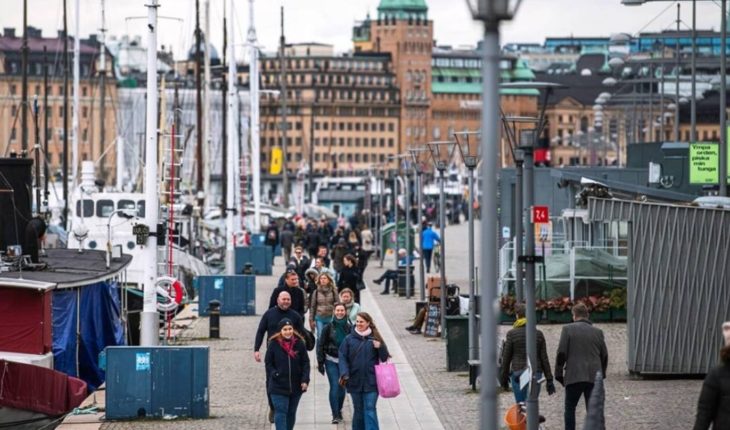Perhaps the country that has aroused the most curiosity for its management of the pandemic since all this started is Sweden. Unlike its neighbours, and contrary to what virtually all European countries ended up doing earlier or later, the Scandinavian country recommended social estrangement but took much more relaxed measures: primary schools remained open, restaurants and bars were kept open, social gatherings of up to 50 people are still allowed… Sweden’s chief epidemiologist, Anders Tegnell – whose resignation was claimed by a major group of epidemiologists and infectologists in April – explained that the strategy of keeping everyone locked up would not work (because, sooner or later, “people would end up dating the same”) and that it was therefore better to think of a long-term plan that took certain precautions but did not break so hard. Some sectors that claim that the economy be “opened up” as soon as possible, are calling in recent days to follow this “successful” model in Argentina. But what do they call “successful”? It definitely is when you compare your absolute death toll to, for example, Britain, Italy or Germany. In this Twitter thread, Rodrigo Quiroga, a researcher at CONICET, suggested that it is reasonable to think that the difference in numbers between Sweden and those other countries is not due as much to the timing and type of measures taken as to local idiosyncrasy:
1- PUMP. Did you see that with regard to covid19 pro-market and liberal economists are claiming the “Swedish model”? Did they read somewhere that Germany and Britain took almost exactly the same measures, at the same time, but failed? Thread comes out… pic.twitter.com/3jXlCDtDTP— Rodrigo Quiroga (@rquiroga777)
May 4, 2020
In the same vein, as Hans Bergstrom explained in a note in Project Syndicate, there was really no real management plan: what there was is disinsidivity on the part of the authorities and if it did not exploit everything as in other countries of the world it was because of the very high civic responsibility of the population. According to the World Securities Survey, swedes in fact combine great trust in public institutions with extreme individualism. But even taking this into consideration, the absolute death toll says little, because Sweden has only 10 million inhabitants. And if you take into account the death toll per million inhabitants, it turns out that Sweden is no longer so exemplary: it is the seventh deadest country in the world, with 276 per million inhabitants. A good way to understand whether the model actually works is to compare Sweden with the other Nordic countries, which took stricter measures, and analyze both its current situation and the forward-looking line. While in Sweden the number of cases is more than 22 thousand, its neighbours do not in any case exceed 10 thousand.
It could be objected, and rightly so, that Sweden has twice as many inhabitants. But that doesn’t explain why mortality is so high than in Denmark or Norway. In Sweden, so far, 2800 people have died. Meanwhile, around 500 died in Denmark and in Norway, about 200. So Sweden quadruples the number of COVID deaths added to its two neighbours (which have, between the two, the same number of inhabitants as Sweden).
And this data is reinforced when the death toll is projected to two months. According to a model by the Institute for Health Metrics and Evaluation (IHME) at the University of Washington, Sweden will have had more than 10,000 deaths by COVID-19 by August. Denmark and Norway, for their part, will not exceed a thousand deaths between the two.
Let’s draw some conclusions. That the contagion curve is “easy.” Because of the normal dynamics of the circulation of a virus, the curve sooner or later is snset, and that is why in the coming months, when peaks pass in almost every country in the world, we will tire of hearing about the successful examples that they allegedly managed to hit the curve about without taking restrictive measures. But it’s not enough for the curve to be down. The contagion curve of the Spanish Influenza pandemic of 1918 was also flattened, but between 20 and 40 million people died along the way. We don’t want to flatten the curve because the flat curves are prettier to us than the curves with beaks: we want to flatten it because we know that the flatter the curve, the more lives will have been saved. All countries, take whatever measures they take, will end up flattening the curve. What you have to see is how many lives were lost in that flattening process. And in Sweden, according to all the odds, it seems that there will be many more than those that would have been lost had they taken measures like those of their neighbours. The only figure that, so far, can speak of a country’s success in managing this pandemic is the death toll. And Sweden is not exactly an example in this regard. In this note:





